Geological Museum in Warsaw, part 8. Graptolites and conodonts / Muzeum Geologiczne w Warszawie, część 8. Graptolity i konodonty.
Every now and then I come back with my memories to a place that delighted me incredibly, that is to the Geological Museum in Warsaw. This time I am going to show you the collections that have been labeled "Graptolites and Conodonts." There were, among others sea urchins. The colorful shells of sea urchins looked nice. They remind me of a creation, as if from another galaxy ;)
Co jakiś czas wracam wspomnieniami do miejsca, które mnie niesamowicie zachwyciło, czyli do Muzeum Geologicznego w Warszawie. Tym razem pokażę wam zbiory, które zostały opatrzone nazwą "Graptolity i konodonty." Znalazły się tam m.in. jeżowce. Fajnie wyglądały różnokolorowe skorupki jeżowców. Przypominają mi jakiś twór, jakby z innej galaktyki ;)
Graptolites are an extinct group of animals classified as semi-strings. They lived from the Cambrian to the Early Carboniferous period.
Conodonts are a group of extinct marine organisms with mainly scattered microscopic tooth-shaped elements of the perosophageal apparatus, composed of calcium phosphate or Ca5 carbonate-rich fluorapatite, occurring in sedimentary rocks from the Late Cambrian to Late Triassic period (c. 540-200 million years ago).
Source: Wikipedia
Graptolity to wymarła gromada zwierząt zaliczanych do półstrunowców. Żyły w okresie od kambru do wczesnego karbonu.
Konodonty to grupa wymarłych organizmów morskich, po których zachowały się głównie rozproszone mikroskopijne zębokształtne elementy aparatu wokółprzełykowego, zbudowane z fosforanu wapnia lub fluorapatytu zasobnego w węglan Ca5, występujące w skałach osadowych pochodzących z okresu od późnego kambru do późnego triasu (ok. 540–200 mln lat temu).
Źródło: Wikipedia
Other interesting exhibits were those tooth-like oral elements. Nice teeth! ;) That's all left of the conodonts. I wonder what the rest of their body looked like.
Innymi ciekawymi eksponatami były te aparaty wokółprzełykowe. Niezłe uzębienie! ;) To tyle pozostało po konodontach. Ciekawie jak się prezentowała się reszta ich ciała.
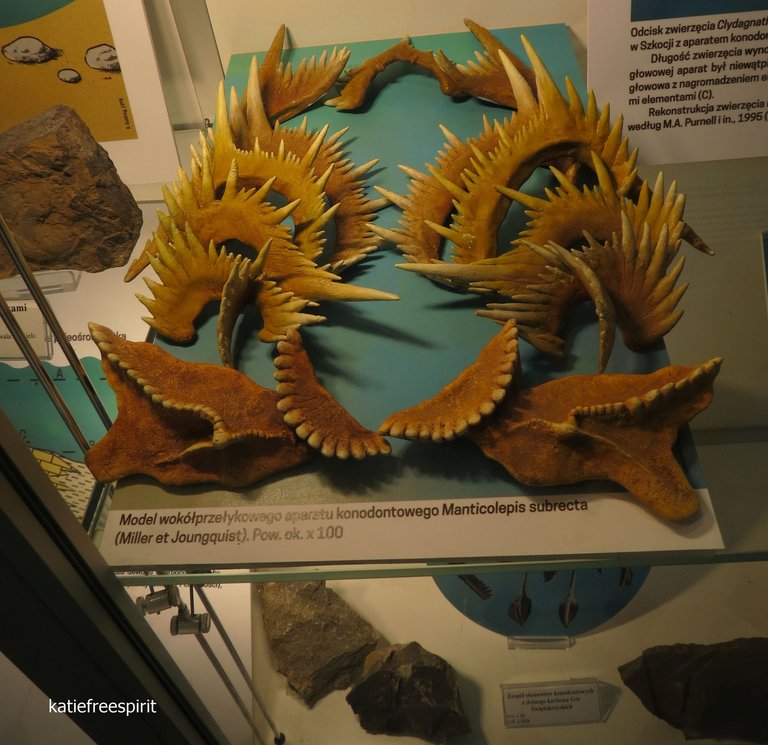
The next exhibits were fragments of rocks with reflected organisms that lived in Silur, that is, in the third period of the Paleozoic era.
Kolejnymi eksponatami były fragmenty skał z odbitymi na nich organizmami, które żyły w dawnych czasach, w Sylurze, czyli w trzecim okresie ery paleozoicznej.
Here you can see planktonic graptolites reflected in the rocks. Interestingly, they formed bubble-like structures that floated colonies near the water's surface.
Tu możecie zobaczyć odbite w skałach graptolity planktoniczne. Co ciekawe, tworzyły banieczkowate struktury, które unosiły kolonie przy powierzchni wody
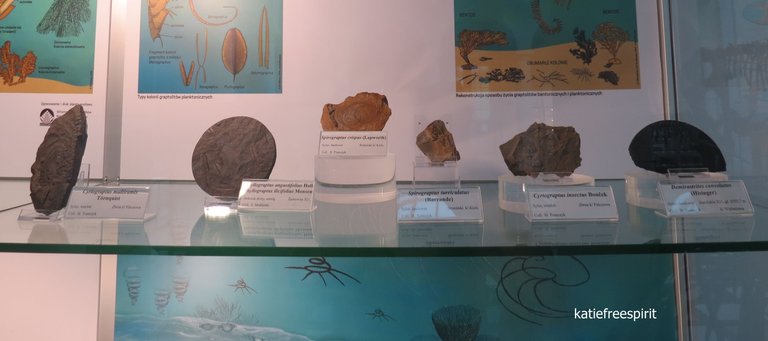
Wow, this specimen looks like someone has painted a spiral pattern with hairs on the stone.
Wow, ten okaz wygląda jakby ktoś namalował na kamieniu spiralne wzory z włoskami.
And this specimen looks like a plant with lots of tiny leaves is reflected on the stone. I would love to find such a stone someday with a plant or animal motif imprinted.
A ten okaz wygląda jakby na kamieniu odbiła się roślina z mnóstwem maleńkich liści. Bardzo bym chciała znaleźć kiedyś taki kamień z odbitym motywem rośłinnym lub zwierzęcym.
Below you can see the largest specimen I have seen in this display case. It looks wonderful. You can see details of the plants reflected on the boulder.
It is limestone with numerous remains of Scyphocrinites daylilies. It was found in Alnif, Morocco in 1833. It comes from the time of Upper Silurian.
Source: Plaque in the museum.
Poniżej możecie zobaczyć największy okaz, jaki widziałam w tej gablocie. Wygląda cudownie. Można dostrzec detale roślin odbitych na głazie.
To wapień z licznymi szczątkami liliowców Scyphocrinites. Znaleziono go w Alnif w Maroko w 1833 roku. Pochodzi z czasów Syluru górnego.
Źródło: Tabliczka w muzeum.
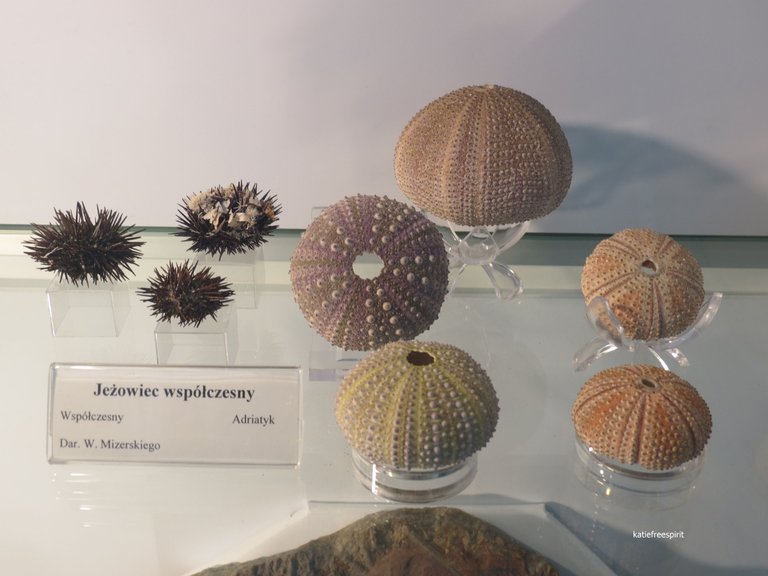
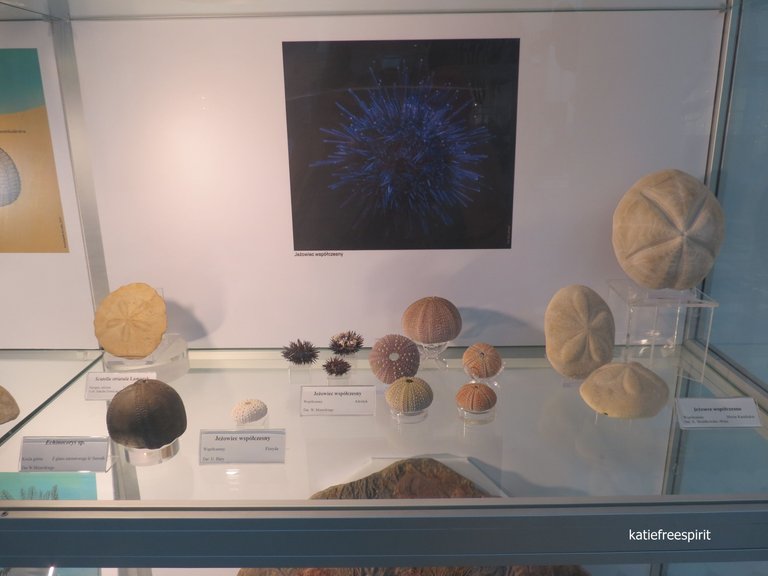
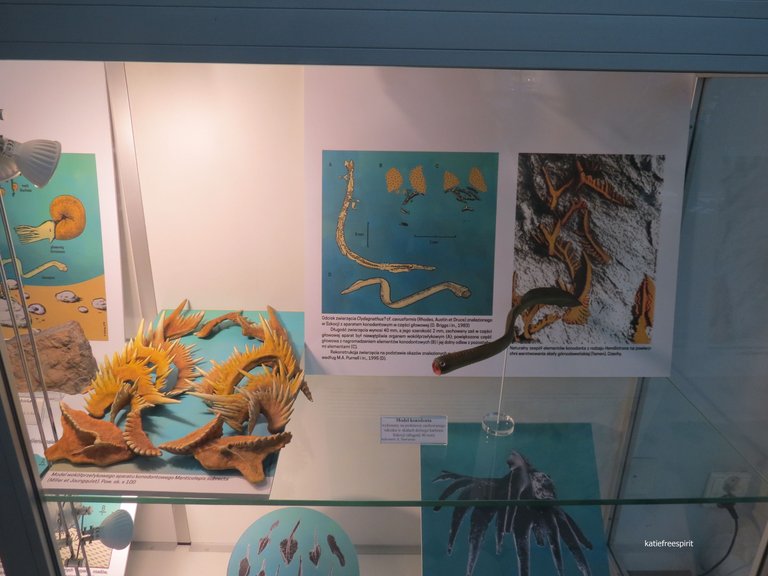


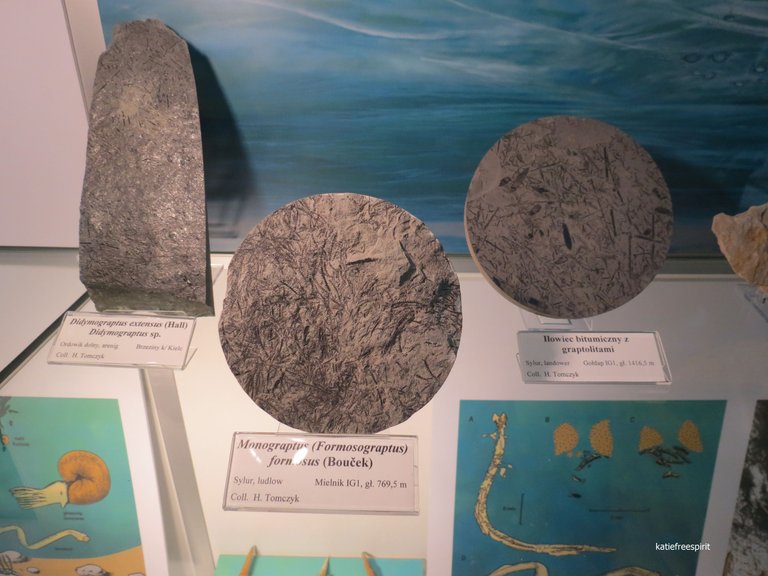
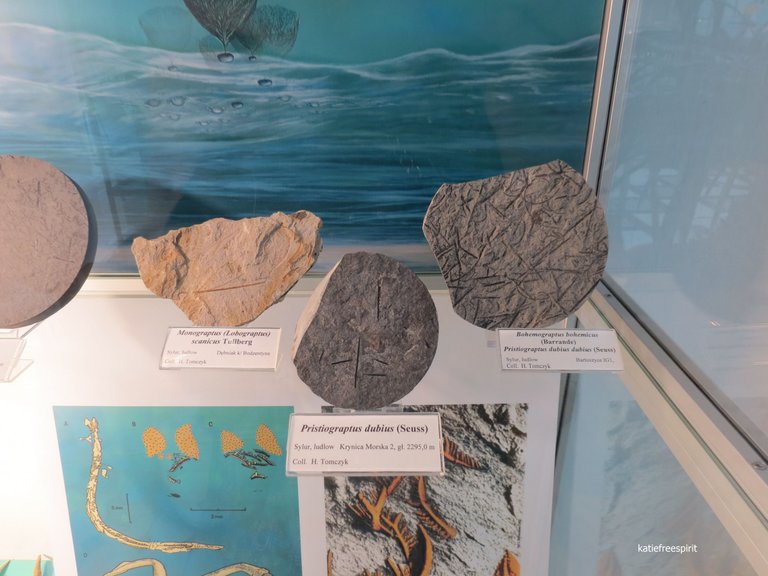
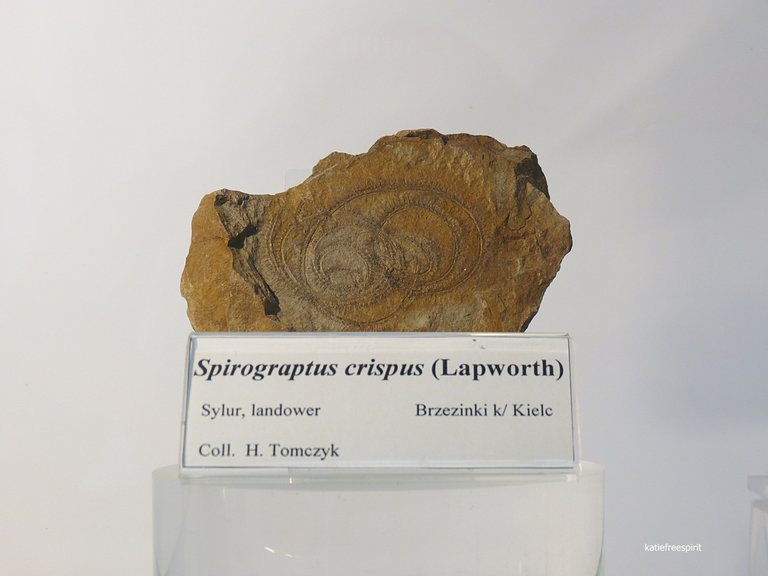
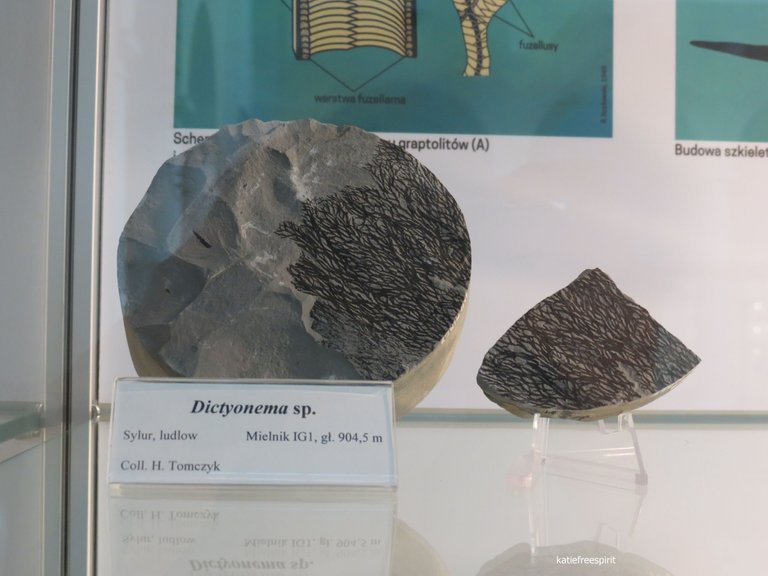
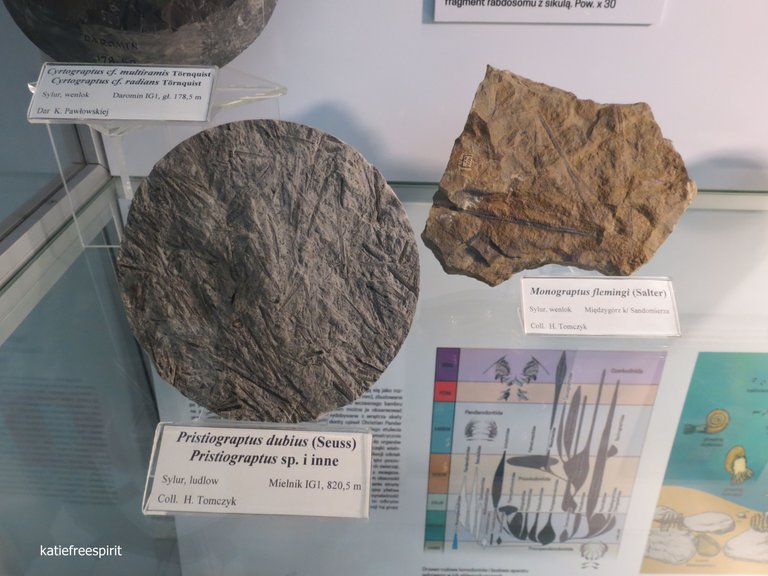
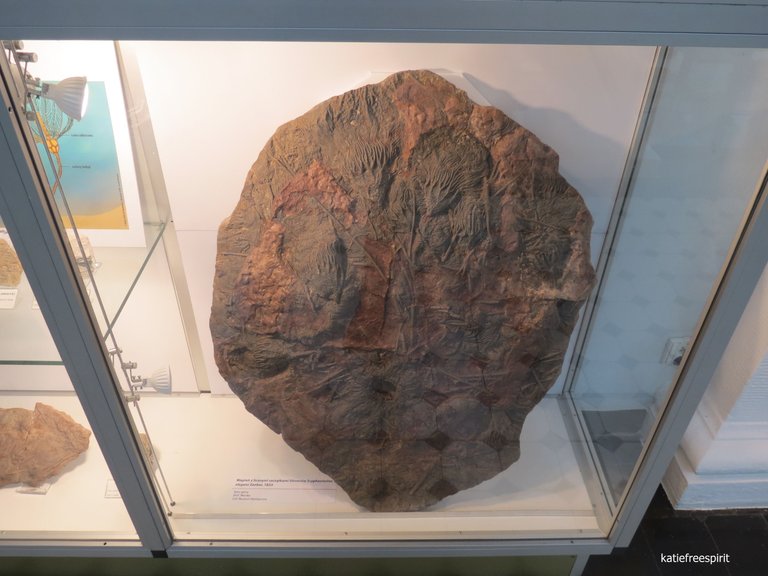
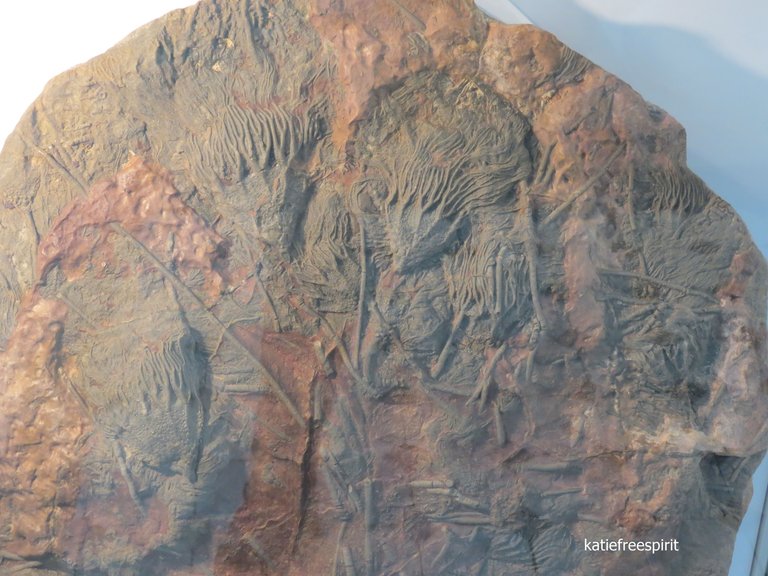
Congratulations, your post has been added to Pinmapple! 🎉🥳🍍
Did you know you have your own profile map?
And every post has their own map too!
Want to have your post on the map too?